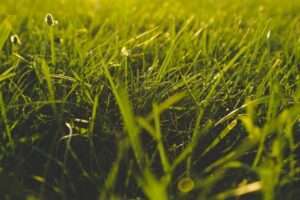Scott Eckert
Harvey Co. Extension Agent
So it’s September and you decide you want to plant tall fescue in your lawn. Have you eliminated unwanted weeds and other grasses? Using herbicides to eliminate Bermuda grass and other weedy plants is a must for a nice even fescue lawn. If you just till the yard and plant without thought of weed control you may be in for a rude awakening if a few years. Weeds, like Bermuda grass, can creep back if you don’t due your due diligence to control them. Lawn renovation takes planning and time and isn’t just a “weekend job.” To plant a lawn by mid-September, you should begin eliminating unwanted vegetation in July.
Tall fescue lawns are usually planted from seed, but can also be installed as sod. September is the best time for planting. Seed germinates in four to seven days under favorable conditions. Planting too early increases susceptibility to heat stress and disease, but late plantings may be injured by cold winter temperatures. Spring seeding should be done in March or April to allow grass to become well established before hot weather. Seed germinates more slowly in the spring when the soil is cold. Weed competition is also greater in the spring.
Siduron (Tupersan) and mesotrione (Tenacity) are the only two preemergence crabgrass preventers that can be safely applied at seeding time. Apply only at the lowest label rate and expect establishment to be slightly reduced. Other crabgrass preventers should not be applied until after the grass has been mowed several times. As a general rule, avoid using broadleaf weed killers until the grass has been mowed three times. The label explains how to use herbicide safely and effectively to minimize injury to newly seeded fescue. The best way to avoid weeds during establishment is to plant in mid-September.
The recommended seeding rate for home lawns is 6 to 8 pounds per 1,000 square feet, using good-quality seed and proper soil preparation and planting procedures. Seeding too lightly or poor technique may result in a thin, clumpy, and weedy stand. Heavy seeding can lead to overcrowding, poor rooting, and disease problems, which may eventually kill turf. Seeding either too light or too heavy weakens turf and offsets the advantages of planting tall fescue.
If you have a thin lawn and want to thicken it up by overseeding use half the recommended rate for seeding a new lawn (3-5 lbs per 1000 sq ft). Mow the lawn to 1 1 ⁄2 inch height. Core aerate if the soil is compacted. Power rake, using spring tines or thin blades. Remove debris with hand rake or lawnmower and catcher. Sow seed uniformly. Use 6 to 8 pounds per 1,000 square feet if repairing large, dead areas. Fertilize with 1 pound nitrogen per 1,000 square feet. Water in the seed and fertilizer. Again, do not use crabgrass preventers, except siduron (Tupersan) or mesotrione (Tenacity), until grass is well established.




